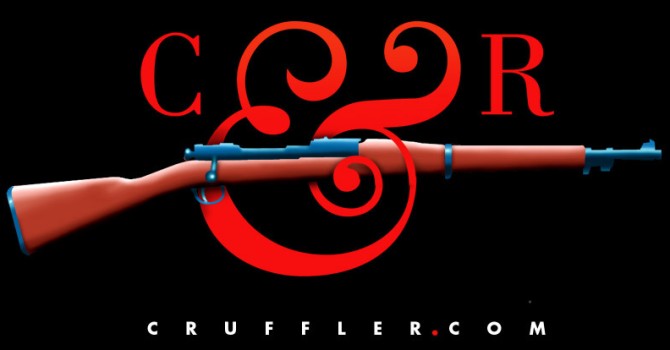
|
|
|
|
 |
Firearms Technical Trivia, January 2002:
|
The 7.92x57mm Cartridge in Polish Service |
|
The Second World War Begins
In the predawn hours of
September 1, 1939, the German Army swept into Poland and ushered in the
age of the Blitzkrieg and the Second World War. At that moment, Poland,
like the majority of small European nations, had equipped its forces with
a mix of modern and obsolete weapons. Poland's small arms were not
markedly inferior, or for that matter, measureably different from their
German counterparts. Indeed,the majority of them shared the same
cartridge.
Small Arms Ammunition
Production in Poland
In February 1921 the Polish
Ministry of Defense established the first government owned facility to
produce military rifle cartridges. The factory, which produced completed
cartridges, bullets, primers, cases and ancillary items, was called Wojskowa
Wytwornia Amunicji Karabinovej (WWAK), and was located in Warsaw.
The cartridge fabrication machinery had been nationalized from the holdings
of the Georg Roth A.G. subsidiary formerly located in Posen (Poznan).
Production efforts were divided amongst three manufacturing divisions.
After four years of operation in Warsaw, the plant was moved to Skarzysko-Kamienna,
southwest of Radom, where it was renamed "National Ammunition Manufacturing
Facility." Cartridges produced at the original WWAK factory in Warsaw
were headstamped with a "W," and often the Polish eagle as well.
After the 1925 move, the headstamp contained the Polish eagle, but not
the W. After the fall of Poland in 1939, the factory was taken over
by the German firm of Hugo A. Schneider, AG (HASAG), and continued to produce
ammunition, albeit for a different destination. Ammunition produced
during HASAG's stewardship of the factory was initially marked with a HASAG
logo, and later with the German ordnance code "kam." HASAG used the
pre-war inventory of cartridge cases in producing initial lots of mild
steel cored ammunition. Eventually five major arsenals, producing
war materiel including ammunition, were to be established. Each of
these was officially identified by a numerical designation:
|
|
|
|
|
|
|
|
|
|
|
|
|
|
|
|
|
|
As the Polish treasury between the wars was in a perpetual state of fiscal crisis and the state run factories were not achieving the volume of ammunition production desired, private investment and contracting were encouraged. As a result, a commercial organization with both Polish and French investors called Zaklady Amunicyjne, Pocisk, Spolka Akcyjna (Corporation for the Manufacture of Ammunition) was created. This company, generally known as Pocisk SA, began to produce ammunition, using machinery purchased from Hirtenberger of Austria, in 1921. (Pocisk means "projectile.") The ammunition produced bore an abbreviation of Pocisk, "Pk." on its headstamp, while boxes had the abbreviation Z.A. "Pocisk" S.A stenciled on them. By 1922, Pocisk was operating two plants, one, the Warsaw "Praga" division which made cartridge making machinery and weapon parts, and the other an ammunition plant at Rembertow, some 15km west of Warsaw. Rembertow's production was not limited to small arms ammunition. The plant produced components and complete cartridges, primers, explosives and artillery shells. In 1925 the government sought to maximize Pocisk's capabilities while minimizing costs, and began a program with resulted in complete nationalization of the firm by 1932. At the same time, all operations were transferred to the Rembertow plant. Pocisk played a critical role in Poland's preparedness - by 1935 it was supplying over 30% of the nation's ammunition requirements.
Another important Polish ammunition manufacturer was Norblin, S.A. Located in Warsaw, the company was established in 1922, and was a key producer of 7.9mm rifle ammunition until the invasion in 1939. Norblin's trademark was a capital letter "N" which can be found on the headstamps of cartridges assembled by the firm. If the cartridge was made entirely with components manufactured by Norblin, two diametrically opposed N's appeared on the headstamp. Norblin's owners were a Mr. T. Werner and the Buch brothers, and throughout its existence it was a privately owned and funded company. While Norblin's main plant was in Warsaw, it operated a foundry and brass mill at Glownie (near Lodz). The Glownie facility not only supplied Norblin's needs but also provided cartridge brass to Pocisk and other government arsenals.
A Brief Overview of Polish
Small Arms
The interwar Polish Army
used several indigenously produced Mauser type rifles as well as the Model
91/98/25, which was a conversion of the Russian Mosin-Nagant to 7.92x57mm.
The standard Polish light machine gun was the Wz28, a modified Browning
Automatic Rifle. Heavier automatic weapons included the Maxim MG08,
the Hotchkiss 14/25, and the Wz30, a type of water cooled Browning.
The Polish Air Force used a number of Vickers Armstrong designs, such as
the Wz23 (a 7.92mm Lewis gun), and the "F" and "K" models. Fixed
aircraft weapons were largely 7.92mm Browning derivations.
7.92mm Polish Ammunition
Overview
Polish military forces were
supplied with a number of 7.92mm cartridges. These included:
|
|
|
|
|
|
|
|
|
|
|
|
|
|
|
|
|
|
|
|
|
|
|
Additionally, the rifle assembly
plants used several types of wzorcowy, or reference catridges with
which to test new weapons. These cartridges were assembled using
carefully chosen S or SC projectiles and components. If a rifle,
carbine, or machine gun failed to meet the required accuracy standards
with these rounds, it was assumed that the gun was at fault and that a
mechanical correction was in order. These cartridges were identified
by box labeling only and did not bear any special marking on the case or
bullet. The Air Force received special high grade aircraft armament
ammunition in S, P, PS, and Z varieties. This ammunition was given
special consideration with respect to primer and propellant quality control.
These elements are especially critical when the ammunition is to be used
in weapons synchronized to fire through the propeller arc; cartridge ignition
and response time must happen in a constant, predictable manner, or the
resultant damage to the propeller could literally result in the aircraft
shooting itself down!
Note: Data for this month's trivia page was gathered from:
Rinker, Robert A., Understanding Firearm Ballistics, (Mulberry House Publishing, Apache Junction, Arizona: 2000)
Understanding
Firearm Ballistics is available from Amazon.com. Click on the
image to order.
